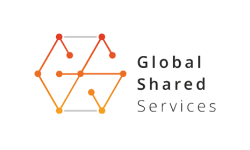- Executive Note
- Editorial note
- Interviews
- Human Resources
- Events Coverage
Developing a company in times of continuous change
GS Services | Mar 3, 2024, 08:31

By Magdalena Panońko, chief operating officer & head of delivery, GS Services Poland

The past years have been extremely challenging for businesses, not only in Poland. Most companies have faced various issues stemming from the changing business environment, new technologies, cultural and societal changes, as well as global events. Such crises are part of business life and can also present opportunities for growth and development if appropriate actions are taken. Analysing the steps we have taken, as well as the actions of our clients, we see several elements that, alongside the obvious ones such as cost optimisation, are crucial for achieving our goals.
- Analysis and adaptation, meaning understanding how current changes and problems affect our industry and company is crucial. This involves the need for an in-depth analysis of the situation, identifying threats and opportunities, and then adjusting our strategies accordingly. It’s important to also consider the price we will pay for achieving our set goals.
- Innovation and diversification, which involves seeking new ways to provide value to customers or new market segments to conquer. Innovative products, services, or business models can help survive a crisis and build a competitive advantage.
- Increasing operational flexibility by adjusting our processes and organisational structure to be more flexible and resilient to changes. This may include implementing remote work, flexible work schedules, outsourcing certain processes or positions.
- Monitoring and adapting involve regularly analysing the market situation and reacting to changes. Tracking industry trends, analysing the competition, and responding to customer signals can help maintain the company’s competitiveness.
- Customer focus – understanding customer needs and expectations – has become even more important. Focusing on providing valuable services tailored to changing customer needs can help maintain customer loyalty and acquire new contracts.
- Partnerships and collaboration with other companies can benefit both parties, especially in times of global interdependencies and uncertainty. Strategic partnerships can help expand the range of services offered, reach new markets, or reduce costs while maintaining quality.
- Workforce flexibility, which means the need to adjust the employment structure to changing market needs. A flexible approach to the workforce, especially in the IT industry, such as using temporary workers, flexible forms of employment, or outsourcing workers, can help maintain the company’s financial liquidity and enable us to complete projects in a shorter time.
- Monitoring regulations and legal norms involves being aware of changes in regulations and legal norms that may affect our industry.
- Having contingency plans and different scenarios in case the situation worsens. Having a flexible action plan can help respond quickly to unexpected changes.
Flexibility, adaptability, and monitoring the business environment are crucial in coping with market uncertainty, alongside the ability to let go, implement changes, and sometimes even abandon set goals. It’s worth mentioning the concept of a learning organisation developed in the 1990s by Peter Senge in his book The Fifth Discipline, where he describes an organisation that continually improves its skills, knowledge, and capabilities to achieve lasting success in a dynamic and changing business environment. The main principles of this concept include:
- Systems thinking: The learning organisation views the entire company as a comprehensive system in which the actions and decisions of one part affect the whole. Systems thinking involves understanding the interdependencies and consequences between different areas of the company’s operations.
- Personal mastery: The learning organisation promotes the personal and professional development of employees, encouraging them to continuously improve their skills, expand their knowledge, and develop their potential. This requires the involvement of both employees and management in the learning process.
- Mental models: The learning organisation recognises the existence and impact of mental models, hidden beliefs, thinking patterns, and assumptions that shape behaviour and decisions. Changing mental models is crucial for adapting to change and improving organisational effectiveness.
- Shared vision: The learning organisation engages employees in jointly creating and setting goals and visions for the future of the company. A shared vision motivates employees to act and integrates their efforts in achieving strategic objectives.
- Team learning: The learning organisation promotes collaboration and knowledge sharing among employees through building teams, joint projects and initiatives, and creating spaces for sharing experiences and best practices.
- Systems thinking in planning and action: The learning organisation uses systems thinking in the process of planning and decision-making. It adheres to the principle that actions should be taken in the context of the whole system, taking into account long-term consequences.
- Adaptation and innovation: The learning organisation is open to change and innovation, reacts flexibly to changing market conditions, and seeks new ways to solve problems and improve actions.
Implementing these principles and practices in our organisation helps us create a flexible and adaptive culture that allows us to effectively respond to changes and achieve lasting success in a dynamic and competitive business environment, as well as to help our clients achieve their goals.







